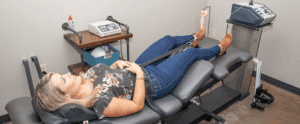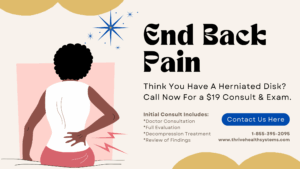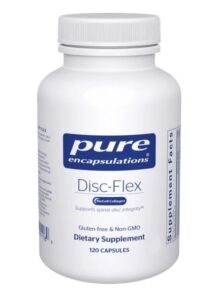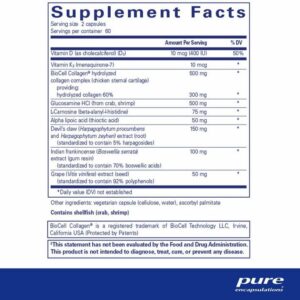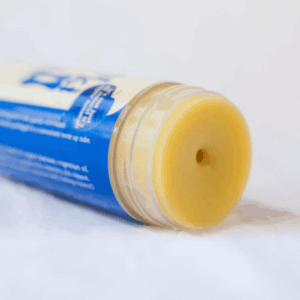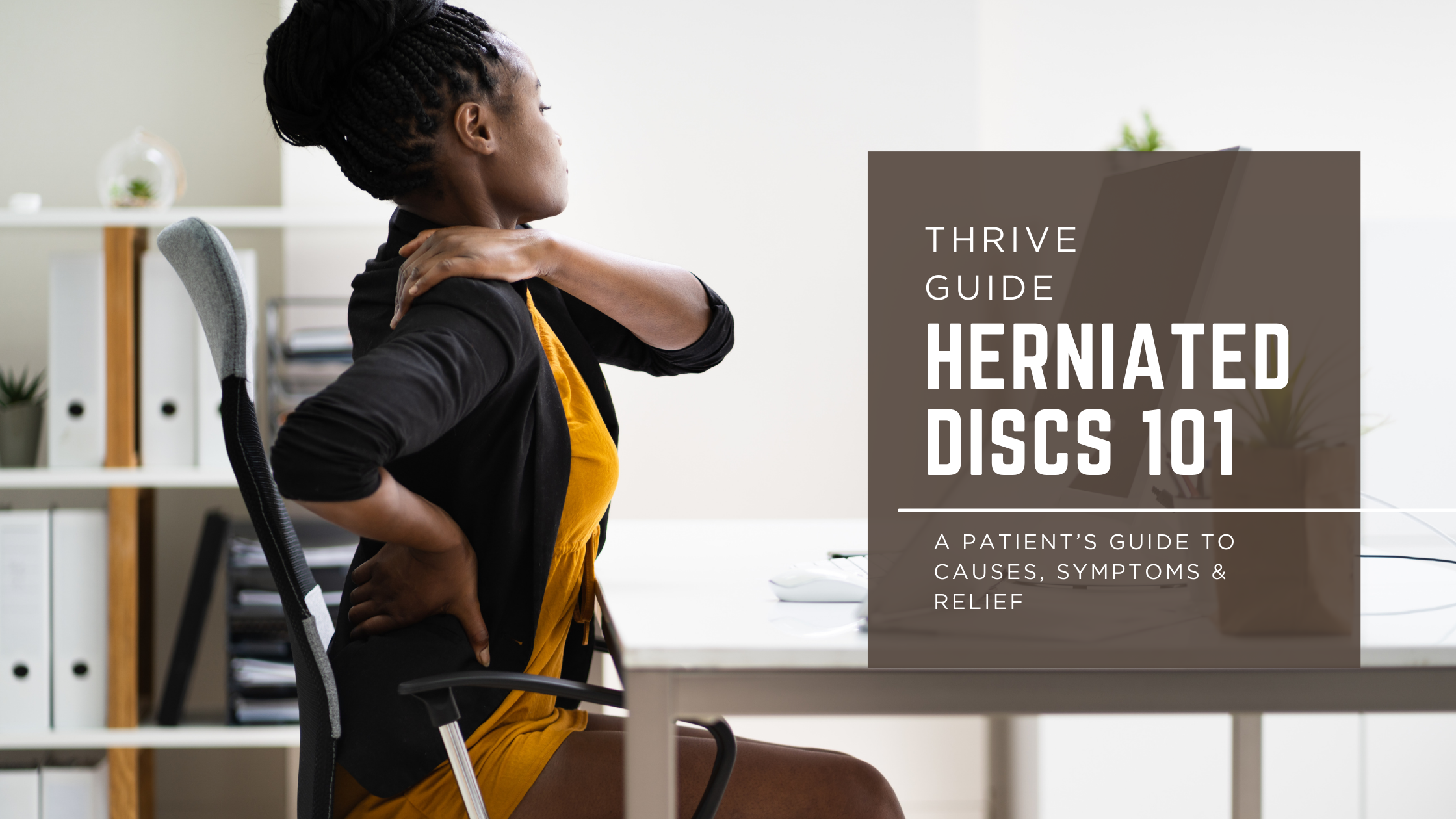
Herniated Discs 101: A Patient’s Guide to Causes, Symptoms & Relief
If you’ve ever had a herniated disc, you know it’s not just a “back issue.” It’s something that can take over your life in ways you never imagined. That deep, aching pain in your lower back or neck that flares when you bend the wrong way, the sudden zap that shoots down your leg or arm without warning, the tingling or numbness that wakes you up at night and leaves you wondering if you’ll ever feel normal again.
For many, it’s not just the pain itself. It’s what the pain takes away. Simple things like tying your shoes, getting dressed, driving to work, or even sitting long enough to eat dinner can feel impossible. Sleep becomes restless. Movement feels risky. And before long, your world starts to shrink around what you can’t do.
We hear it all the time. People who used to love hiking, lifting weights, playing with their kids, or just going about their day now find themselves avoiding anything that might set it off. The worry, the frustration, and the exhaustion of trying to live around the pain can wear you down, not just physically, but mentally and emotionally too. It’s easy to feel defeated when it seems like every doctor visit ends with the same options: medication, injections, or surgery.

At Thrive Health Systems, we see that every day. People walk in tired, discouraged, and just ready for their lives to feel normal again. And we get it. Because when you’re living with this kind of pain, it’s not just your back that hurts. It’s your independence, your peace, and your joy.
But here’s the good news. It doesn’t have to stay that way.
We sat down with a few of our doctors who treat herniated discs every day and who have helped countless patients find real, lasting relief without surgery or dependency on pain medication. They’ll share what’s really happening inside your spine when a disc herniates and how the right, non-invasive care can help your body truly heal so you can move freely, sleep deeply, and finally feel like yourself again.
Because you deserve more than a quick fix. You deserve lasting relief. You deserve your life back.
How Do You Know If Your Back Pain Is From A Herniated Disc?
In this video, Dr. Arter explains what really happens when a disc in your spine slips or gets pinched. You’ll learn how these discs can press on nerves and cause pain, numbness, or tingling in your legs, arms, or neck. Even a tiny bit of pressure can make everyday movement, sleep, and simple tasks feel difficult.
We’ll also show why knowing the real source of your pain is so important and how non-surgical, gentle treatments can help you find lasting relief without heavy medication.

 Common structural causes of herniated discs:
Common structural causes of herniated discs:
-
Natural wear-and-tear as we age (disc degeneration)
-
Sudden injuries or accidents
-
Lifting something too heavy with poor form
-
Poor posture and spinal misalignment over time
Lifestyle and functional medicine factors:
-
Sitting too much or lack of movement
-
Carrying excess weight, which adds stress to the spine
-
Chronic inflammation in the body
-
Nutrient deficiencies that weaken connective tissue and discs
Symptoms of Herniated Discs
-
Back or neck pain that may come and go
-
Pain radiating into the arms or legs (like sciatica)
-
Tingling, numbness, or weakness in hands, arms, or legs
-
Pain that worsens when sitting, coughing, or sneezing
-
Feeling stiff or limited in your movement
What’s the Easiest Way to Tell if You Have a Herniated Disc?
In this video, Dr. Arter shows how chiropractors can find the exact source of your pain using gentle, non-invasive tests. You’ll see how simple movements can reveal whether a disc is pressing on a nerve, and why this matters for effective, lasting relief.
Learn why understanding what’s really causing your pain is the key to healing and how chiropractic care can help you feel better without surgery or heavy medication.
How We Diagnose Herniated Discs at Thrive
At Thrive, we don’t just look at your spine — we look at your whole health picture. Diagnosis may include:
-
A thorough physical exam and movement assessment
-
Neurological checks for strength, reflexes, and sensation
-
Imaging studies (X-rays, MRI, or CT scan if needed)
-
A review of lifestyle factors that may contribute to your condition
What’s The Difference Between A Bulging Disc vs. Herniated Disc?
In this video, Dr. Grammer explains what’s really happening when you have a bulging or herniated disc. He’ll show the difference between the two, why one can cause pain while the other might not, and how chiropractors can figure out what’s really going on without needing an MRI.
If you’ve got back, neck, or leg pain, numbness, or tingling, this video helps you understand why—and how to start getting real relief.
The “Thrive Way” to Fix a Herniated Disc (Without Surgery)
In this video, Dr. Arter explains what’s really going on inside your spine and how we help patients heal naturally. You’ll learn how chiropractic care, laser therapy, and spinal decompression can help the disc repair itself—not just mask the pain. The doctor also shares how Thrive’s unique approach combines these treatments to not only relieve pain but actually support your body’s ability to heal and stay strong long-term.
Dr. Arter also talks about how sometimes we start to feel a little better and instantly push ourselves too far (we’ve all been guilty of that) and why staying patient with the healing process can help you avoid setbacks and even surgery down the road.
If you’re tired of living with back pain, this video gives you real hope for long-term healing.
What Is Spinal Decompression?
“Decompression therapy? Sounds intense…” If that’s your first thought, don’t worry — Dr. Grammer’s got you. He explains what it is, how it works, and why people love it.
As Dr. Grammer will explain, you simply lie face down while your spine is gently stretched. You might not feel a big pull — and that’s actually a good thing. If your muscles tense up, it can get in the way of the therapy. When your body relaxes, decompression gives your discs the space they need to start healing naturally.
Spinal decompression gently stretches your spine to take pressure off irritated nerves, increase circulation (your body’s healing “delivery system”), and help your discs stay healthy and hydrated so they can cushion your spine like they’re meant to.
Find relief with spinal decompression and Class IV laser therapy — serving Colorado Springs, Centennial, and Arvada.
Here’s the best part: research actually backs this up.
✅ Real improvement in disc health
One study showed that after just 6 weeks of non-surgical decompression, people with disc herniations actually gained disc height — which means the disc was recovering and creating more space for nerves. And the more the disc improved, the more their pain went down (BMC Musculoskelet Disord).
✅ Better results than physical therapy alone
Another high-quality study found that when decompression was added to regular physical therapy, patients had better pain relief, better movement, stronger muscles, and a better quality of life compared to therapy alone (BMC Musculoskelet Disord).
✅ Less pain, more function
A 2023 study looked at people with herniated discs in their lower back. After doing non-surgical spinal decompression therapy, participants reported almost half less pain and were able to do daily activities much more easily. In other words, this therapy doesn’t just reduce pain — it helps you get back to moving and living your life (Journal of Novel Physiotherapies).
Why Is Laser Therapy Crucial to Healing A Herniated Disc?
In this video, Dr. Arter introduces a teleological perspective — which simply means asking:
➡️ What was the body designed to do?
➡️ What purpose does this structure serve?
From that view, the spine wasn’t built to fail — it was built to heal.
What discs need to repair:
Because discs have very limited blood flow, they require the right environment to heal well. That’s where targeted therapies come in:
-
Spinal decompression to reduce pressure and allow vital nutrients into the disc
-
Class IV laser therapy (borrowed from veterinarians long before humans used it!)
➤ Boosts blood flow
➤ Activates mitochondria — your cells’ energy + healing engines
➤ Speeds up collagen production
➤ Accelerates disc recovery
Dogs don’t cooperate with bed rest… and honestly, neither do humans. Laser + decompression gives your disc the support it needs to repair itself — without surgery.
Here’s what the research says:
Class IV Laser Therapy
-
Pain Relief and Functional Improvement: A 2025 study involving 66 patients with lumbar disc herniation found that after 10 weeks of Class IV laser therapy, participants experienced a significant decrease in pain and an increase in the diameter of the lumbar spinal canal, suggesting improved nerve space and reduced pressure (International Journal of Environmental Sciences).
-
Enhanced Mobility and Quality of Life: A 2024 study with 34 patients demonstrated that Class IV laser therapy significantly improved pain levels and quality of life scores compared to a control group, highlighting its effectiveness in managing symptoms of lumbar disc herniation (Journal of Clinical and Diagnostic Research).
-
Improved Blood Flow with Class 4 Laser Therapy: A 2012 study found that Class 4 laser therapy can significantly increase blood flow to injured tissues, helping deliver more oxygen and nutrients where they’re needed most. This improved circulation supports the body’s natural healing process and helps damaged tissues recover faster (Journal of Athletic Training).
Discover lasting relief with Class IV Laser Therapy in Colorado Springs, Centennial, and Arvada.
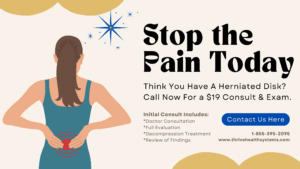 Why Thrive’s 3-Step Method Works for Herniated Discs
Why Thrive’s 3-Step Method Works for Herniated Discs
When it comes to herniated discs, Thrive takes a three-part approach to help your spine heal and get you back to living pain-free.
Step 1: Re-center the disc
Dr. Grammer explains that the first goal is to gently pull the disc back into place. This helps stop the irritating chemicals in the disc from pressing on the nerve, which is what causes that sharp, shooting pain.
Step 2: Heal the disc itself
Because discs don’t get much blood flow, they don’t heal easily on their own. That’s where our Class IV laser therapy(sometimes called a “clasp” in our practice) comes in. Dr. Grammer explains that it helps repair the fibrous outer layer of the disc, giving it the support it needs to stay healthy and reducing the chance it will re-herniate.
Step 3: Support the spine with your body
While we’re helping the disc heal, we also focus on your posture, strengthen the muscles around your spine, and correct your biomechanics. Functional movement training teaches your body how to move safely and efficiently so your muscles can help hold the disc in its proper place and prevent future injury.
By combining decompression, laser therapy, chiropractic care, and functional movement training, Dr. Grammer explains, we’re not just masking the pain — we’re helping the disc heal, nerves calm down, and spine function properly. This multi-step approach is what gives our patients the best chance for long-term success.
Our Patient’s Success Stories That Speak for Themselves
After years of pain, frustration, and dead ends, this adventure-loving Coloradan finally found lasting relief. He came to Thrive after seven chiropractors, 15 specialists, and eight different medications — and still living in daily agony from multiple herniated discs and a severely damaged lower back.
He had gone from rock climbing and river rafting… to struggling to get up the stairs and relying on a cane.
But after just three months in our customized Thrive program, everything changed.
✅ Reduced from 8 medications down to 2
✅ Regained mobility and strength
✅ Back to kayaking with his sons
✅ Doing handstands again
“This place has given me my life back.”
His dedication + the Thrive healing approach = a life fully reclaimed.
This transformation is why his story is one of our absolute favorites — and why we love what we do.
At Thrive, we don’t just treat pain — we help you take your life back.
Watch More Patient Healing Success Stories That Prove Healing Is Possible
What to Expect Moving Forward
We know living with a herniated disc can be frustrating and even scary. Maybe you’ve had to put your favorite activities on hold, or maybe someone has already told you surgery is the only option. The good news? It doesn’t have to be that way.
At Thrive, we’ve helped countless people find a better path — one that reduces pain, improves mobility, and helps you get back to the things you love. With the right care plan, your spine can start to heal naturally, and you can start feeling like yourself again.
If you’re ready to try a new approach and take the first step toward reclaiming your life, reach out to us today. Let’s make your recovery a reality.
When to Seek Immediate Help
Call your doctor or seek emergency care if you experience:
-
Sudden, severe weakness or numbness
-
Loss of bladder or bowel control
-
Intense pain that doesn’t improve with rest
-
Rapidly worsening neurological symptoms
Muscling Through The Pain? Here’s What Can Happen
A herniated disc isn’t something to “push through.” While strength and resilience are admirable, pushing through a herniated disc is not one of those times. When you wait too long or try to power past the pain, the stakes get much higher — fast.
In this video, Dr. Grammer explains what can happen when a disc injury is left untreated:
Potential long-term consequences:
• Permanent nerve damage
• Loss of bowel or bladder control
• Sexual dysfunction
• Loss of grip strength or leg function
• Difficulty lifting or holding objects
• Increased likelihood of surgery becoming the only option
This isn’t about fear — it’s about protecting your future mobility and independence. We see too many people come in after waiting months or years… when the damage is already done.
If you address a herniated disc early and properly, healing is absolutely possible.
If you ignore it? Your options get more limited.
Thrive’s Message to You
If you’re dealing with sciatica, don’t settle for “managing” the pain. At Thrive, we take the guesswork out of your healing by creating a personalized plan that addresses both the structural and lifestyle factors behind your nerve pain.
Nutraceuticals That Can Support Disk Herniation Recovery
The best results happen when in-office care is paired with the right support at home. Our Herniated Disc Recovery Stack works alongside your chiropractic and functional medicine treatments to ease pain, reduce inflammation, and keep your discs strong and supported as you heal.
Enhance your Thrive care plan with this targeted recovery bundle:
Disc-Flex:
Disc-Flex provides targeted nutrition to help keep spinal discs strong, flexible, and resilient. A herniated disc happens when weakened discs lose integrity and put pressure on nearby nerves, often causing pain, stiffness, or discomfort. By supplying key building blocks like glucosamine, collagen, antioxidants, and herbs, this formula supports disc structure and helps maintain comfort and mobility, which may be especially valuable for those dealing with or recovering from herniated discs.
Chiki Chill Balm
Chiki Chill Pain Relief Balm is an all-natural anti-inflammatory formula made with arnica, magnesium, and a powerful blend of 8 essential oils. Arnica helps reduce swelling and bruising, magnesium relaxes tense muscles and calms the body, and essential oils like peppermint, ginger, wintergreen, and rosemary boost circulation and ease pain. Together, they provide fast relief for sore muscles, joint pain, arthritis, headaches, and more—without chemicals, just pure natural goodness.








